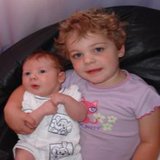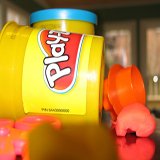How to Learn Language
It's necessary for us as parents to understand how to learn language to our kids. Learning language is one of the chief pleasures of my life. It provides both intellectual stimulus and social adventure.
This section contains a collection of advice, suggestions, tips and techniques for how to learn language to a child.

Humans use speech and language development to communicate or share thoughts, ideas, and emotions.
Theories of language development include that it is a set of rules, shared by the individuals who are communicating, that allows them to exchange those thoughts, ideas, or emotions.
Theories of speech development includes talking, one way that a language can be expressed.
Child language acquisition occurs gradually through interaction with people and the environment. All children goes through the normal language development stages. Some just take longer than other on how to learn language.
Whether they speak early or late, are learning one language or more, are learning to talk along typical lines or are experiencing difficulties, how to learn language in children can be promoted.
I hope you find these strategies helpful in assisting you on how to learn language to your child.
Benefits of Reading
Reading to your toddler is one of the great contributions you can make to your child speech development. Even though he may seem to listen passively as you go through the story, studies have found that young children who listens to stories read to them by their parent for just 10 or 15 minutes each day, usually have more advanced child language development than those who miss out on these benefits of reading.
Of course, the benefits of reading to children might come from listening to other sources of stimulation, such as television and video tapes, but there is something very special about reading to your child, something that harnesses his imagination and enthusiasm more than most other forms of speech and language development.
Babies First Words
Psychologists studying the types of words that children first acquire during their first thousand words, have found that over 50% of these babies first words are general in nature, referring to objects within a general class, such as 'ball, 'car' and 'house'.
A word such as 'dog' may be used for all animals. Less than 15% are specific, referring to particular people or objects, such as 'Mummy' and 'teddy'.
Another finding from child language development research is that many of a babies first words are connected with things she can actually use in some way or another, for instance, words like 'spoon', juice' and 'cup'.
This is further proof that your child language development reflects closely her everyday experience.
Early Childhood Stuttering
Stuttering in children (also known as stammering) is common from as young as 2 years old. A child of this age often starts to say a word, doesn't complete the whole word, start to say it again, and so on.
Speech difficulties like these occur frequently when the child language development is beginning to accelerate. Fortunately, most 2 year olds pass through their toddler stuttering phase without any help as they are gaining self confidence.
Make sure that nobody (including older siblings) makes fun of your young stuttering child, tries to mimic him, or attempt to hurry him along. He needs your time, patience and support to get through this temporary early childhood stuttering phase.
Kid Playgroups and Bright Kids Nursery
At this age your child language development can be enhanced by mixing with other children as much as it can by stimulation from you. Of course, she bickers sometimes with her peers when they play together, but for most of the time they prattle away happily to each other, sharing stories and experiences.
The incentive of communicating with a friend in order to play together is strong enough to prompt better speech and more mature listening skills. That's why it is so important for you to arrange regular contact with other her own age, at either kid playgroups or bright kids nursery, or even during visits at home.
Nursery Rhymes for Children
Many of the traditional nursery rhymes for children date back hundreds of years. For instance, 'Ring-a-Ring-o-Roses' refers to the Great Plaque of London - the 'ring' is the red rash indicating the disease has started and the 'all fall down' line at the end is self-explanatory. And this is one childhood tradition that you really should endeavor to maintain.
Children nursery rhymes promote your child language development through repetition, through developing his awareness of thyme, through demonstrating the poetic quality of language and through showing him that language has a fun element. Some children nursery rhymes and songs are tongue-twisters (such as 'Peter Piper') and are great for improving his mastery of different sounds and varied pronunciations.
These strategies can be used as guidelines on how to learn language - any language for that matter.
Be sure to browse through all the language child development pages that is broken down in different age groups.
Read more about the different language development stages.
Find It!
Can't remember where you read something specific? Just type in your search term in the box below and your specific topic will be returned to you instantly.









